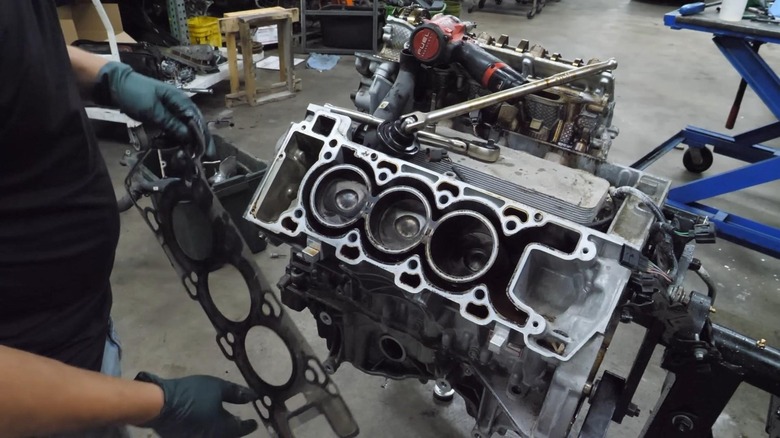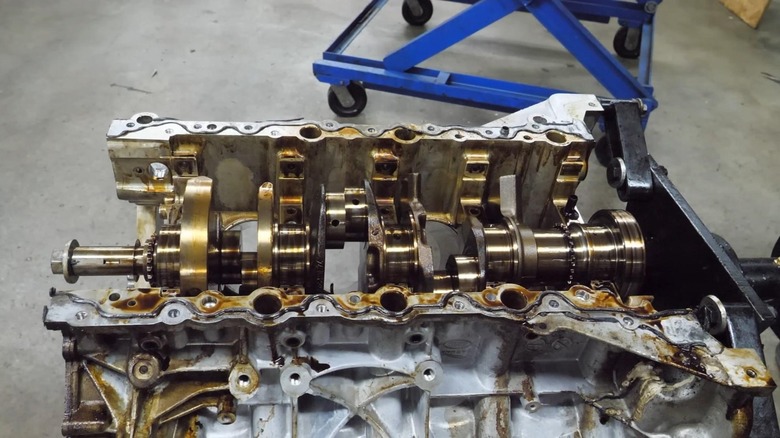This Strange V6 Jaguar Engine Uses A V8 Block, Here's How
Auto manufacturers are businesses. Like other businesses, the bottom line is a big deal. If ever there is a chance to cut costs while netting the same result, it's a big win. So, when Jaguar needed a V6 engine, they turned to what they already had and what they already knew. Using the existing AJ133 Jaguar V8, engineers from the legendary British automaker developed a V6 engine with a V8's architecture.
Now, it's not at all uncommon for manufacturers to use parts interchangeably between engines or get a little outside of the box with an engine design. This particular example, though, takes things a little bit further. The V6 variant of this engine actually shares the exact same engine block as the V8. Instead of using the same architecture and shortening the engine block, Jaguar simply left out two cylinders at the back of the engine. It certainly makes the interchangeability nice, given that it means the exact same engine mounts, transmission, and accessories fit both engines. However, it isn't quite as simple as removing two cylinders from the engine. Let's take a look at how Jaguar made this crazy V6 engine come to be.
A little more than just removing two cylinders
Obviously, you can't just take two sets of rods and pistons out of a V8 and expect it to run perfectly fine as a V6. In essence, though, that is what Jaguar did. With the cylinder heads removed, you can see the spots where cylinder sleeves would go if it were a V8. It does look a little goofy and definitely takes up more space than needed. One might assume that the extra engine block weight might be a bit annoying for chassis engineers, too, but the bigger weight penalty comes with the crankshaft.
Since the engine block remains the same length overall, the crankshaft does as well. Given that it is missing two crank pins and the accompanying throws, a pretty hefty counterweight was added to the back of the crankshaft to keep things smooth throughout the engine's operation. That, however, isn't the only modification that was made to the crankshaft to make this work.
Atypical angle added some complication
The vast majority of V-shaped engines use a 60-degree angle. However, the Jaguar V8 and V6 use a 90-degree angle to allow more room between the cylinder heads for the intake manifold and supercharger system. That angle with a V6 could be prone to causing odd firing intervals. Fortunately, Jaguar has a solution for that as well.
Instead of standard connecting rods and crank pins, the Jaguar V6 uses adjoined connecting rods and split crank pins to ensure that a cylinder fires every 120 degrees of crankshaft rotation. Avoiding the odd firing intervals means a smooth-running engine. In addition, each end of the crankshaft has a counterweight to ensure it still retains some of that luxurious Jaguar feel, making it as smooth as possible.
It certainly isn't the most practical approach to engine design that the world has seen. It is, however, functional and clever. Not many folks can say they have a V6 that uses a V8 engine block!

